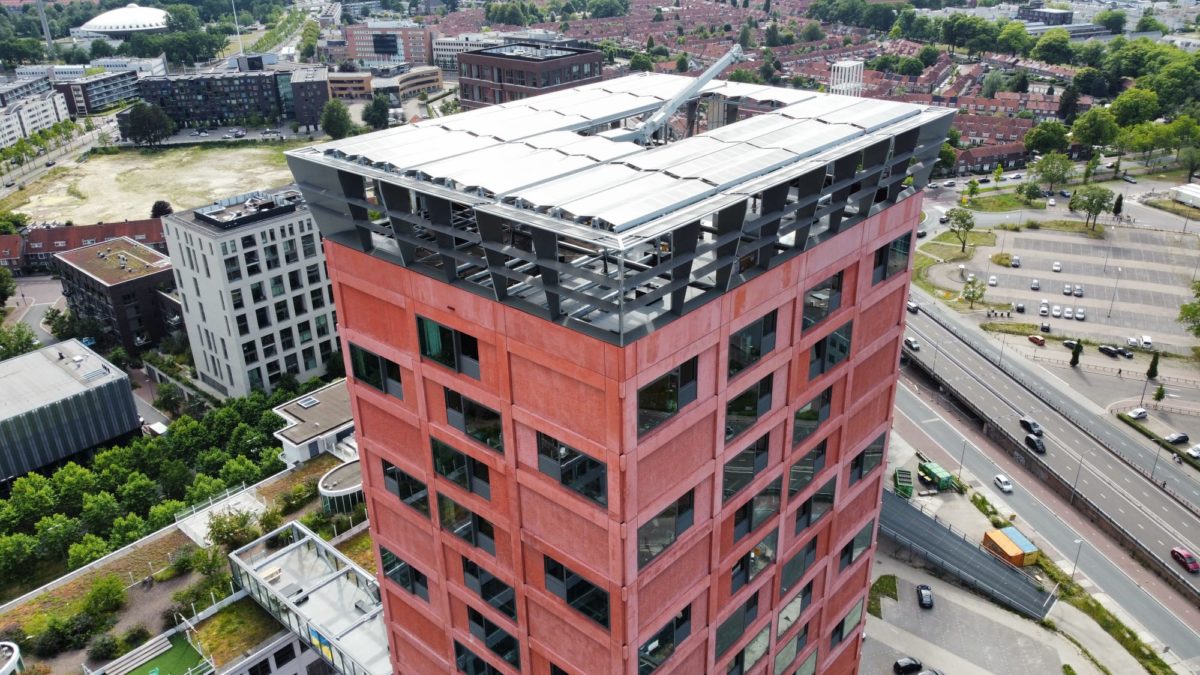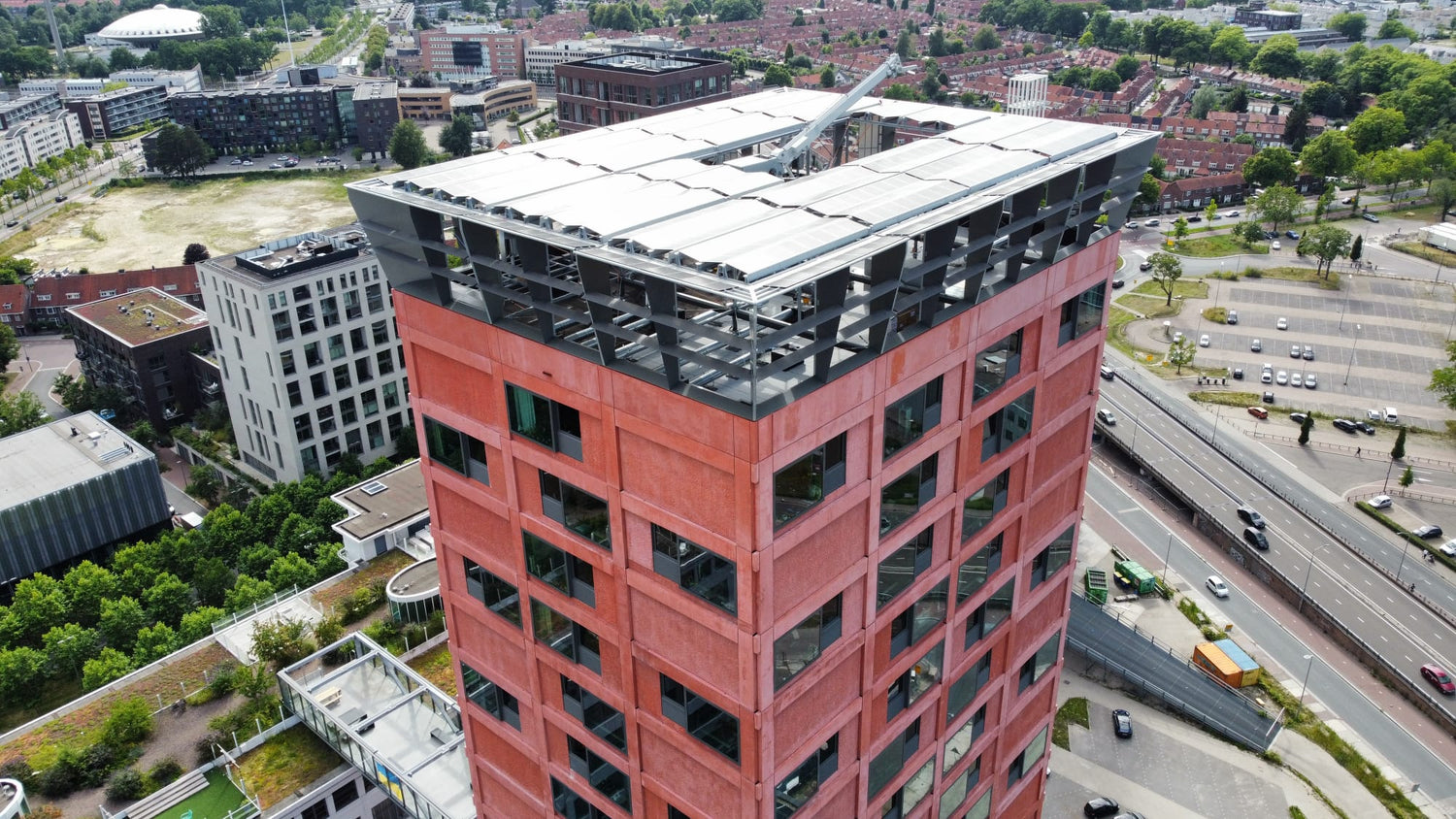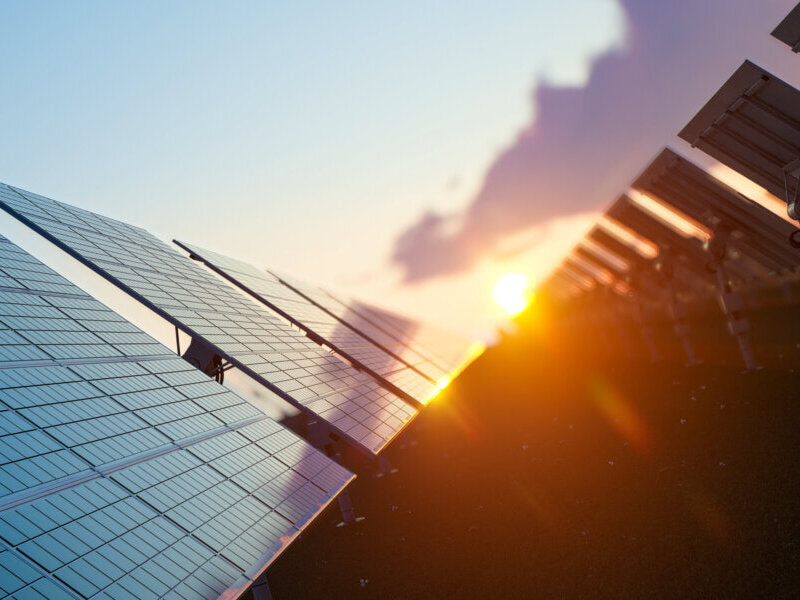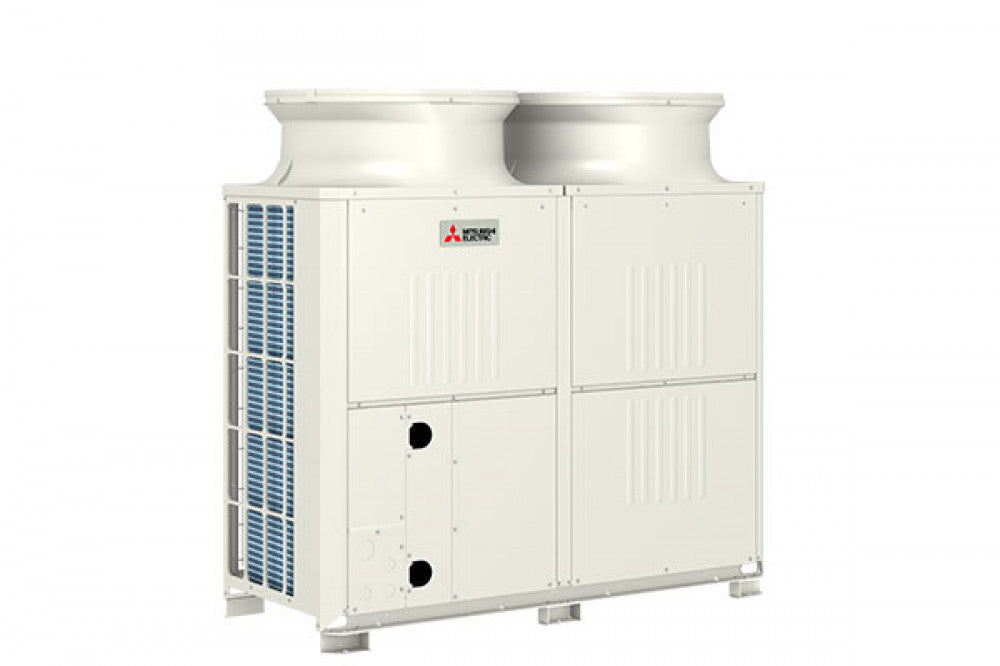https://www.pv-magazine-australia.com/2022/12/01/rooftop-system-with-pv-panels-mini-wind-turbines-in-the-netherlands/
Rooftop system with PV panels, mini wind turbines in the Netherlands

The HaasjeOver installation in the Netherlands
Image: Ibis Power
From pv magazine Global
Ibis Power, a Dutch renewables architecture specialist, has developed a hybrid solar and wind power system for the rooftops of buildings with at least fives floors. The company claims the ready-made system can produce six to 10 times more electricity than standalone rooftop solar.
“PowerNEST accelerates the wind flow into the turbines increasing their output by 4 times, but also increases the power output of the solar panels by 30% to 40% by directing the wind to actively cool the panels from the bottom,” Ibis Power CEO Alexander Suma told pv magazine.
The modular solution includes a row of 3 kW wind turbines topped with bifacial panels that capture light reflections inside its white cladding. Each module measures 7.2 metres by 7.2 metres, with a height of 4.8 metres. The company has already installed the solution in five projects across the Netherlands, most recently in the HaasjeOver building in Eindhoven.
The HaasjeOver installation includes 10 PowerNEST modules. Overall, it has 240 bifacial, 396 W solar panels and 56 335 W monofacial panels, for an annual power output of 116 MWh. It includes four 3 kW wind turbines with annual outputs of 24 MWh, bringing the total solar and wind output to 140 MWh/year. This covers 85% of the tower’s energy needs, said Suma.
The PowerNEST is installed a few metres high from the rooftop, so it covers more rooftop space than is otherwise available.
“The roof before installation only had space for approximately 40 solar panels which needed to be fit in between the ventilation pipes, other utilities, roof edges, and their shadow,” Suma explained. “This would generate only 11 MWh/year to 12 MWh/year, which is 10 times less than with PowerNEST.”
The €800,000 (AUD 1.23 million) HaasjeOver project was delivered as a turnkey solution.
“These are the actual cost of such a project if you want to make it structurally safe, use long-lasting materials and meet the building code,” said Suma.
He said that he expects costs to decrease as the company continues to expand. Ibis Power is currently developing 12 more PowerNEST projects in the Netherlands and is expanding into the rest of Europe and the United States.
This content is protected by copyright and may not be reused. If you want to cooperate with us and would like to reuse some of our content, please contact: editors@pv-magazine.com.
<



